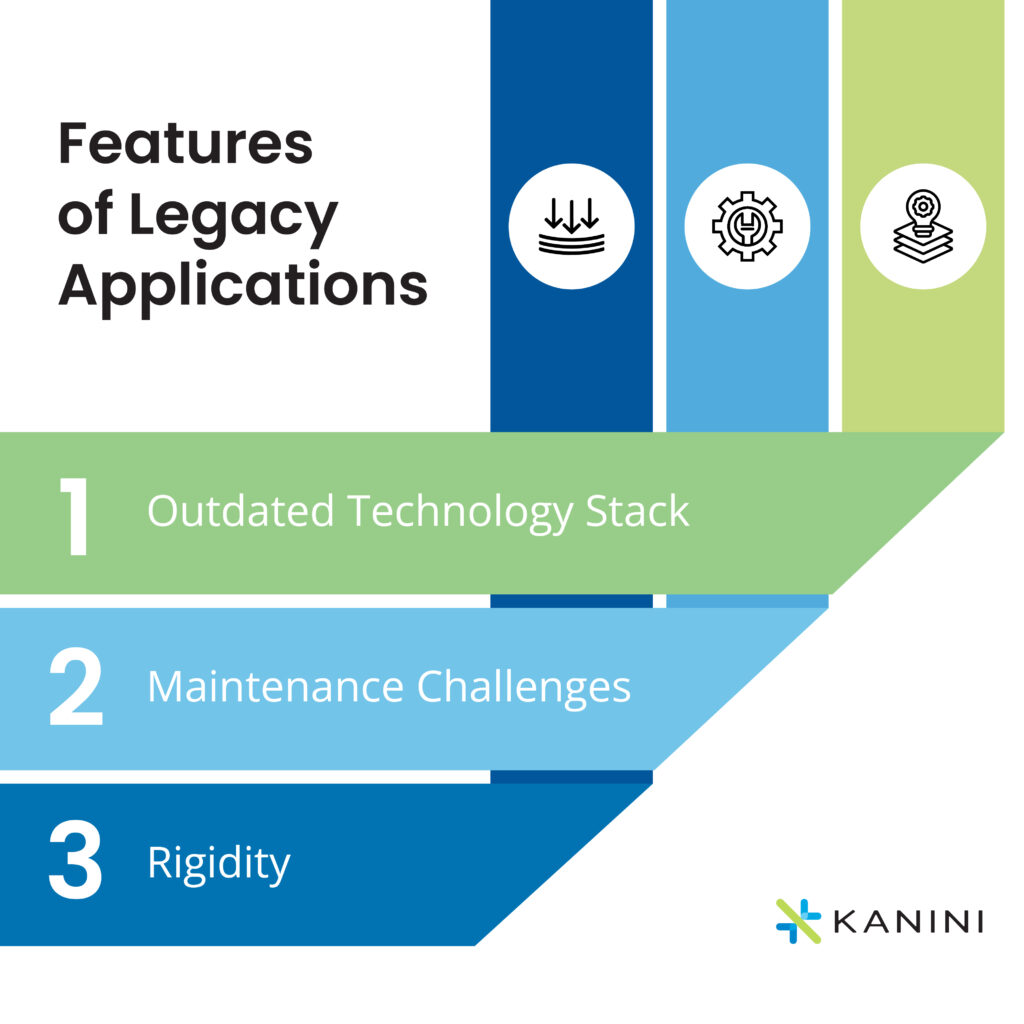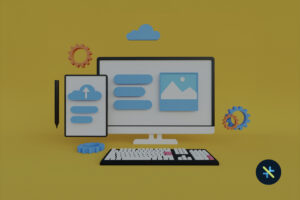In the world of software technology, the term “legacy” carries a certain gravitas – reminiscent of timelines when these were the pioneering applications that paved the digital landscape. Yet, as time marches forward, the very resilience that defines legacy applications often transforms into a hindrance, necessitating a journey of modernization. This article aims to touch upon the complexities surrounding legacy application modernization — from the meaning of legacy systems to the nuanced indicators of their obsolescence, the opportune moment for transformation, the critical considerations involved, and the overarching goals that steer this metamorphic process.
Table of Contents
Understanding Legacy Applications
The term “legacy” does not directly imply obsolescence but rather the age of a system or an application. Legacy applications are those that have endured years, if not decades, of service. They are usually the foundational systems upon which organizations would have built their digital infrastructure.
However, the passage of time often leaves an indelible mark. Legacy applications often find themselves grappling with the challenges posed by outdated technologies and architectures. The programming languages and frameworks that once stood at the forefront of innovation may now seem antiquated, hindering the application’s ability to meet contemporary demands.
Characteristics of Legacy Applications
Legacy applications can be characterized by some primary attributes. These are common among all kinds of legacy applications:
-
Outdated Technology Stack: One of the most common features of a legacy application is that they rely on outdated programming languages and frameworks. These are the ones that usually do not get upgrades or support from the technology providers. This stagnation obstructs seamless integration with modern technologies.
-
Rigidity: Legacy applications also embody a certain unyieldingness; a resistance to adaptability, which is quite contrary to the evolving business needs. This inflexibility becomes a hindrance to growth and innovation, stifling the very agility that modern enterprises relentlessly pursue.
-
Maintenance Challenges: Cumbersome and exorbitant maintenance emerges as a recurrent theme with legacy applications. The upkeep of outdated dependencies transforms into an arduous battle for organizations, depleting resources and undermining the overall efficiency of operations.
Having said all of this, legacy applications are not always to be discarded and replaced but they can be strategically rejuvenated. Recognizing the characteristics that define their legacy status is the first step towards legacy application modernization.

Goals of Legacy Application Modernization
The endeavor of modernizing legacy applications is not a mere cosmetic makeover; it’s a strategic initiative with far-reaching objectives:
-
Enhanced Agility and Scalability: Legacy systems, often monolithic and rigid, can hinder an organization’s ability to respond swiftly to market changes. Modernization introduces modular architectures, microservices, and cloud-native technologies, enabling greater agility and scalability. The systems become more adaptable, allowing for quick additions or modifications to meet evolving business needs.
-
Improved Operational Efficiency: The intricacies of maintaining outdated technologies can bog down IT teams and consume valuable resources. Modernization streamlines operations by consolidating systems, eliminating redundancies, and automating manual processes. This frees up IT staff to focus on strategic initiatives rather than firefighting.
-
Reduced Costs: While modernization requires an initial investment, it can lead to substantial cost savings in the long run. Reduced maintenance overheads, optimized infrastructure, and streamlined processes contribute to a healthier bottom line.
-
Enhanced Security: Legacy systems, due to their age and potential vulnerabilities, can pose significant security risks. Modernization allows organizations to implement robust security measures, adhere to industry standards, and protect sensitive data from evolving cyber threats.
-
Elevated Customer Experience: Modernized applications often come with improved user interfaces, seamless integrations, and enhanced performance. This translates to a superior customer experience, boosting satisfaction and loyalty.
Determining the Right Time for Legacy Application Modernization
As we move further in understanding legacy application modernization, an important question emerges: when is the perfect time to initiate this transformative journey? Discerning the precise juncture requires a meticulous evaluation of various factors, balancing the historical resilience of legacy systems with the imperatives of contemporary digital demands:
1. Business Impact
The first step in this process is to analyze the impact of legacy applications on business objectives. Legacy constraints, when left unaddressed, can metamorphose into shackles that impede progress. By assessing how these constraints hinder the fluidity of business processes, organizations can understand the critical imperative for modernization. If the impact is so much that everything from operational efficiency and maintenance costs to service delivery and customer satisfaction is getting affected, then the need to modernize is urgent. If the impact isn’t too high, the modernization effort can be slower and incremental.
2. Costs of Maintenance
The financial perspective of maintaining legacy applications is very complex. On one side lies the ongoing cost of propping up aging infrastructures, and on the other, the potential expenses associated with modernization. Striking the delicate equilibrium between these two forces is important. By analyzing the trajectory of maintenance costs and juxtaposing them against the anticipated expenses of modernization, organizations can pinpoint the economic tipping point. With this analysis done, they can decide when to modernize by looking at what is more expensive – maintenance or modernization.
3. Technological Mismatch
Legacy systems often do not support the integration with contemporary technologies, because of many differences in the way they are built. However, as business requirements evolve, organizations will need to incorporate modern technologies into their systems. Recognizing those instances where legacy architectures obstruct synchronization with modern tools becomes key. If the existing systems are too rigid to accept change and thereby interfere with operations, then the modernization process needs to begin sooner.
Critical Considerations for Legacy Application Modernization
Embarking on a legacy application modernization journey is a complex undertaking. Several factors warrant careful consideration:
- Modernization Strategy: Organizations must choose between various modernization approaches, each with its pros and cons. Options include rehosting (moving the application to a new environment), refactoring (restructuring the code), rearchitecting (rebuilding the application with a new architecture) or replacing the application entirely.
- Data Migration: Legacy systems often house vast amounts of valuable data. Ensuring seamless data migration to the modernized environment is crucial. This involves meticulous planning, data cleansing, and validation to maintain data integrity.
- Integration with Existing Systems: Modernized applications must seamlessly integrate with other systems within the organization’s ecosystem. Compatibility issues and data exchange mechanisms need to be addressed to avoid disruptions.
- Change Management: Modernization projects can be disruptive. Effective change management strategies are essential to ensure smooth transitions, minimize resistance, and maximize user adoption.
- Skillset and Expertise: Modernization often requires specialized skills and expertise. Organizations may need to upskill their existing workforce or bring in external consultants to bridge the knowledge gap.
The Modernization Journey is Continuous
Legacy application modernization is not a one-time event; it’s a continuous journey of evolution. As technologies advance and business needs shift, organizations must remain vigilant and adaptable. By embracing a proactive approach to modernization, organizations can ensure that their legacy systems remain relevant, agile, and capable of supporting their strategic goals. The investment in modernization is an investment in the future—a future where technology empowers rather than impedes.
While the path may be challenging, the rewards are undeniable. Modernized applications unlock agility, efficiency, security, and a superior customer experience. By navigating this journey thoughtfully and purposefully, organizations can ensure that their legacy systems remain valuable assets, propelling them towards sustained success in the digital age.
At KANINI, we have a successful track record of implementing digital transformations for clients across industries, helping them modernize their systems & applications to keep with the times. If you need help getting started with your modernization journey, please reach out to us! Our experts will get in touch with you.
Author

Edwin Peter
Edwin is a Solution Architect at KANINI. Bringing 20+ years of IT experience spanning presales, application development & architecting, app modernization, and legacy migration combined with deep knowledge across Telecom, Oil & Gas, IFE, HCM, and Healthcare, Edwin is a true cross-domain solution expert. He is well-versed with both – Windows and Unix/Linux platforms and proficient with .NET, Angular, Azure, and legacy technologies like C/C++/VC++, Perl, and Shell Script.







